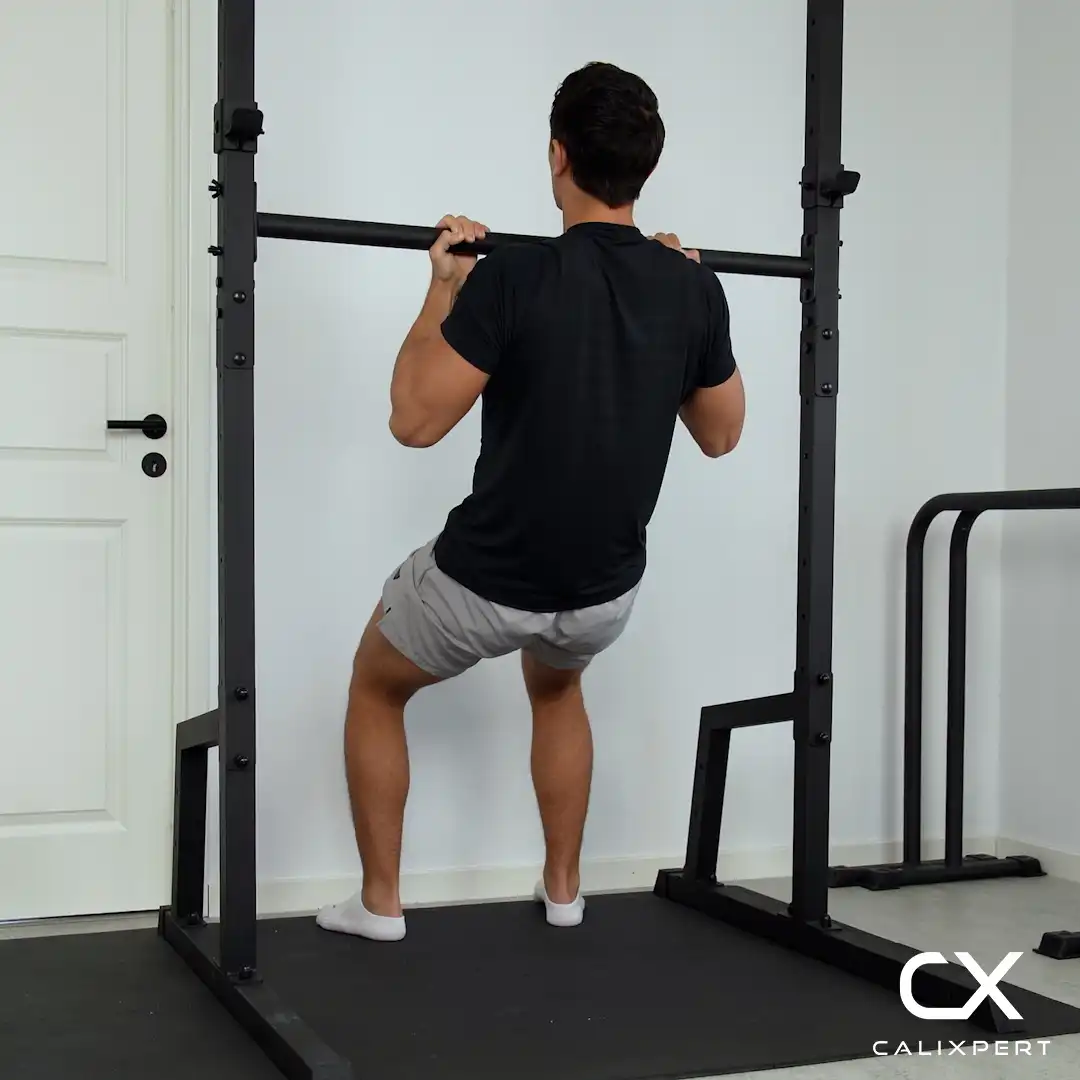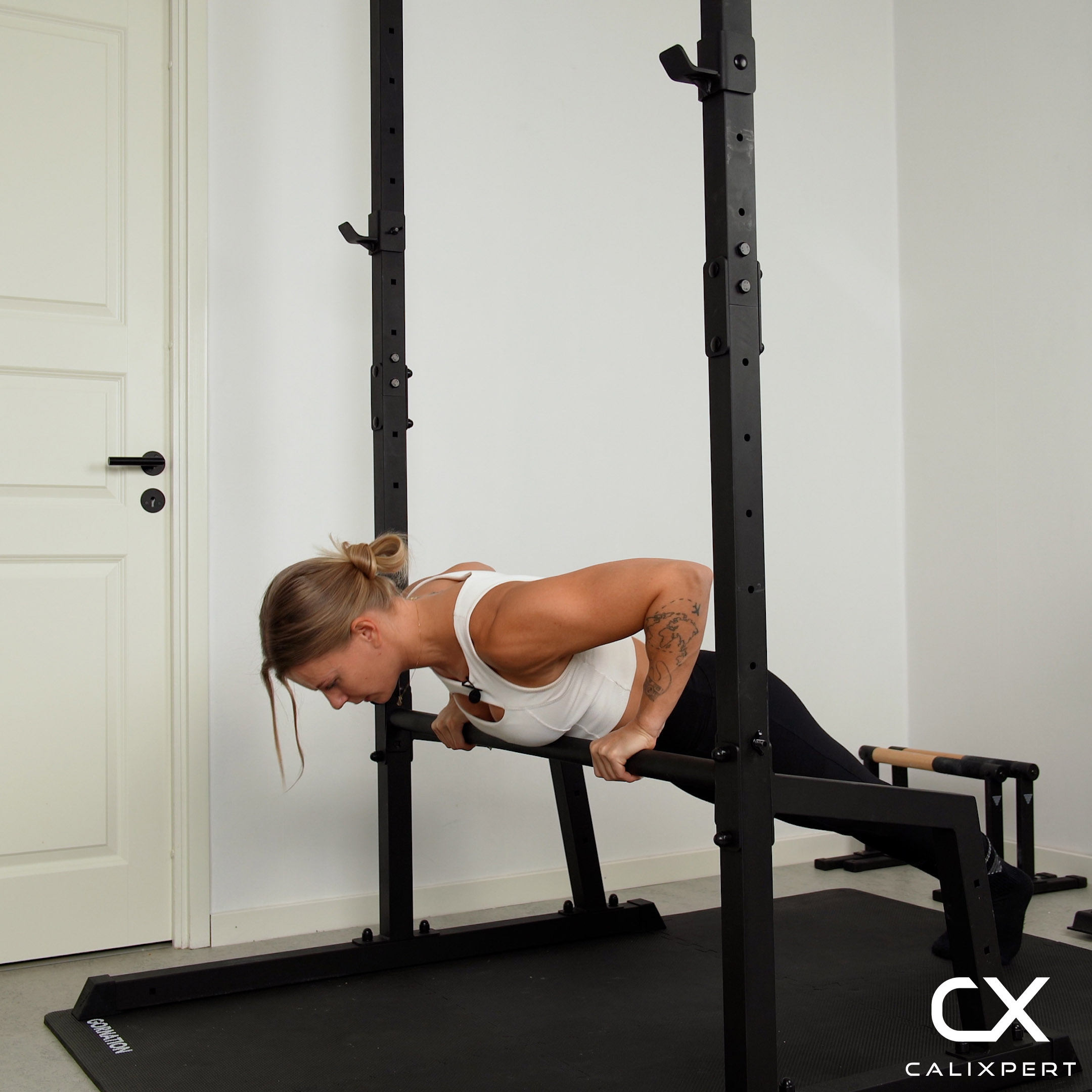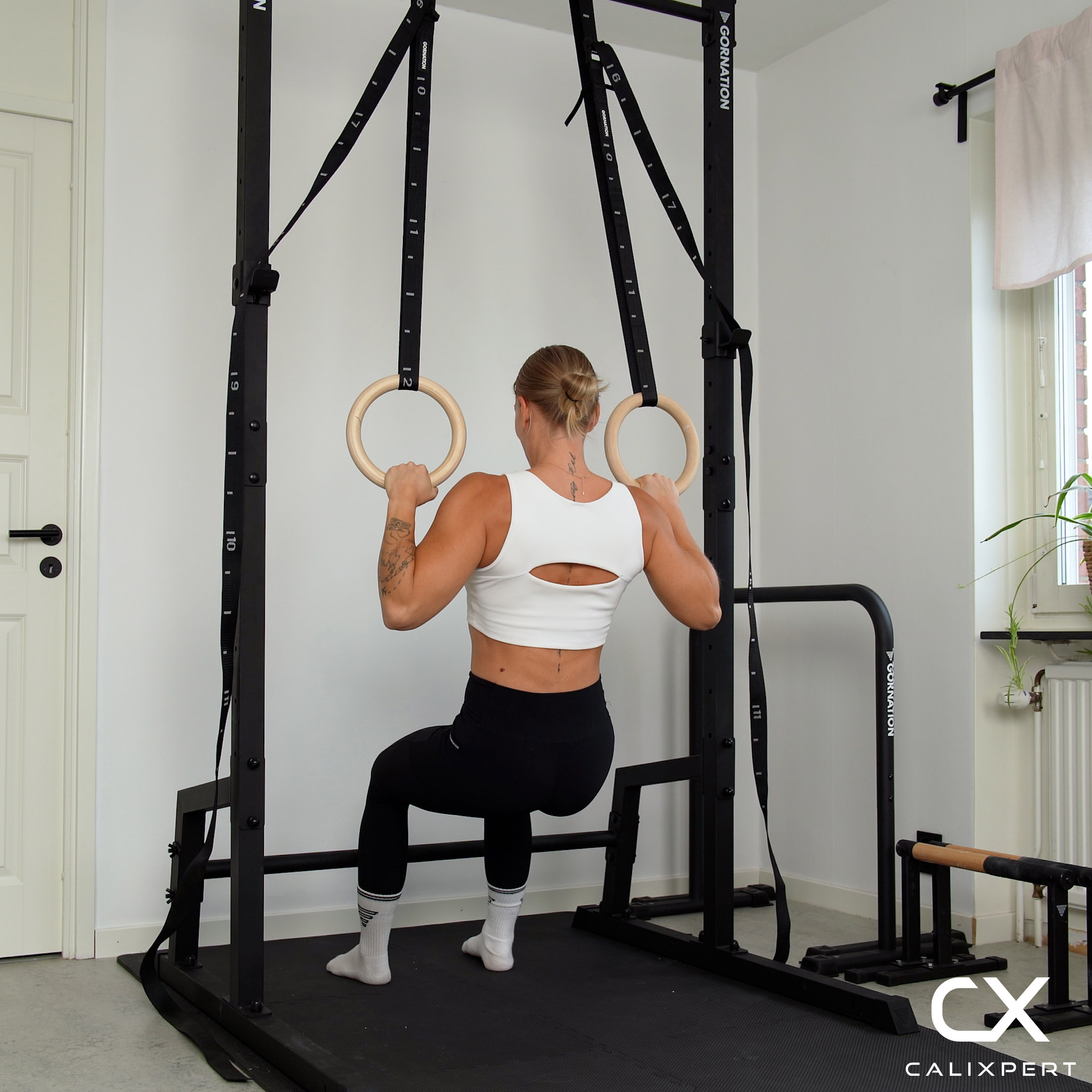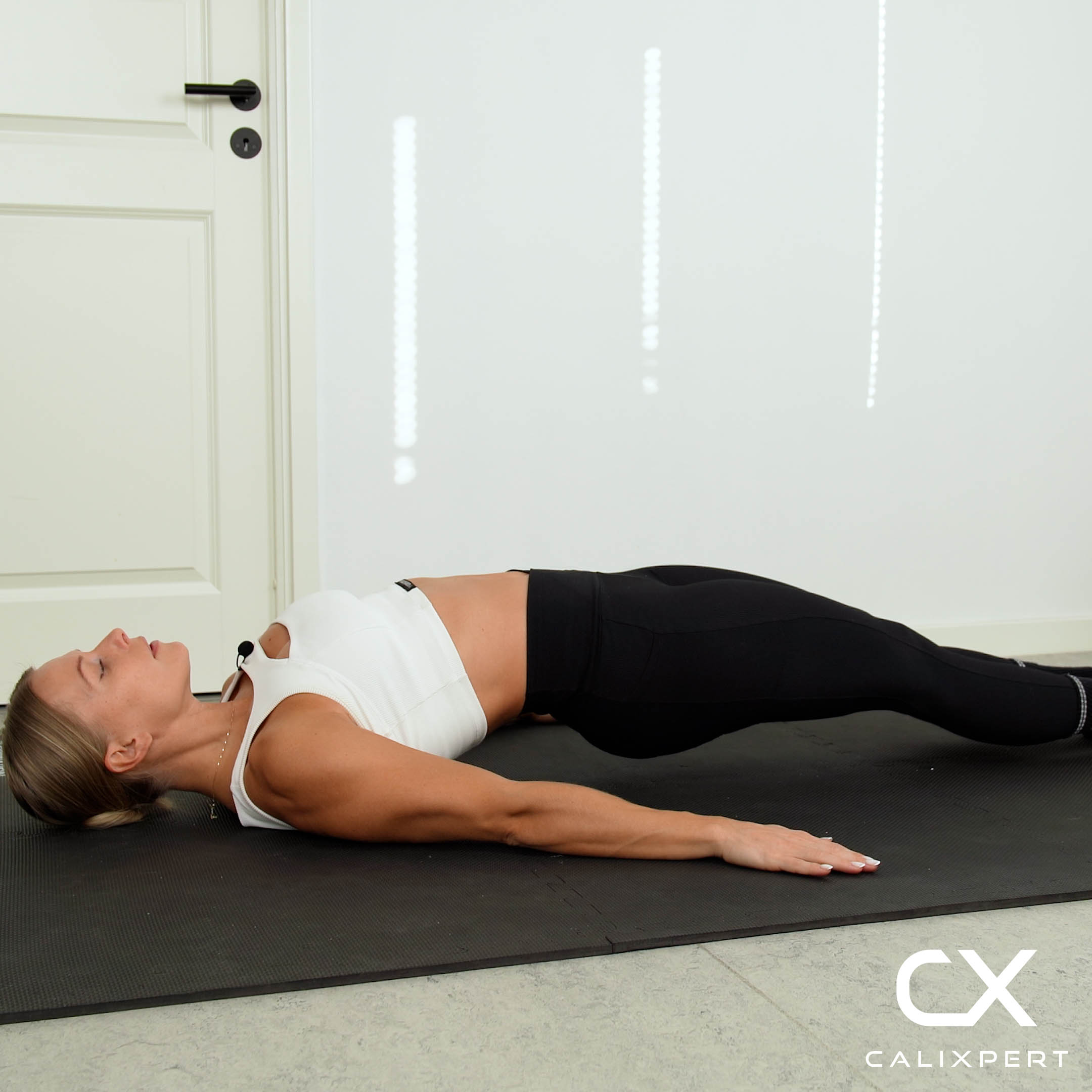How to Do Assisted L-sit Hold
The Assisted L-sit Hold is a core-strengthening exercise that involves holding your legs out in front of you while supporting your body weight with your arms. This exercise helps improve core stability, balance, and overall body control.
Step By Step Guide to Properly Execute Assisted L-sit Hold
- Starting Position
- Sit on the floor with your legs extended in front of you. Place your hands on the ground beside your hips, fingers pointing forward. Use yoga blocks or parallettes for added support if needed.
- Execution
- Press your hands firmly into the ground or blocks, engaging your core and lifting your hips off the floor. Keep your legs straight and together.
- Top Position
- Hold your legs parallel to the ground, maintaining a straight line from your shoulders to your feet. Keep your core tight and shoulders down.
- Lowering Phase
- Slowly lower your hips back to the ground with control, keeping your legs extended and together until you return to the starting position.
Benefits of Assisted L-sit Hold
- Enhances core strength and stability.
- Improves balance and body control.
- Targets the abdominal muscles, hip flexors, and shoulders.
- Increases flexibility in the hamstrings and lower back.
Common Mistakes to Avoid
- Avoid rounding your shoulders; keep them down and back to maintain proper posture.
- Do not let your legs drop below parallel; keep them straight and level with the ground.
- Ensure your core is engaged throughout the exercise to prevent sagging hips.
- Avoid holding your breath; maintain steady breathing to support muscle engagement.
Follow these steps and tips to master the Assisted L-sit Hold with proper form and efficiency.
FAQ About Assisted L-sit Hold
To hold an assisted L-sit longer, practice makes perfect. Start by sitting on the floor with your legs straight. Use your hands to lift your bottom a little. Try holding it for a few seconds. Each day, add a few more seconds. Also, work on your core muscles with exercises like planks and leg raises. Keep at it, and you'll get stronger over time.
When trying an assisted L-sit hold, people often make a few mistakes: they might not keep their legs straight, they might hunch their shoulders instead of keeping them down, or they might not engage their tummy muscles enough. It's important to sit tall, keep your legs straight, and use your tummy muscles to hold the position.
In an assisted L-sit hold, the primary muscles used are the core muscles, including the rectus abdominis and obliques. The hip flexors, such as the iliopsoas, also play a significant role. Additionally, the quadriceps in the thighs and the triceps and shoulders in the arms help support the position.
To safely practice an assisted L-sit hold at home:
- Use sturdy support – Parallel bars, yoga blocks, or the edge of a chair.
- Engage your core – Keep your abs tight to maintain stability.
- Start with bent knees – Tuck your legs first before extending them.
- Press through your arms – Keep shoulders depressed and locked.
- Hold for short durations – Begin with 5-10 seconds and build up.
- Practice regularly – Increase time gradually as strength improves.
Progress slowly and listen to your body to avoid strain.








.webp)






































.webp)





















































